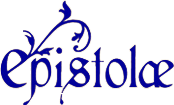A letter from Henry III (1222)
Sender
Henry IIIReceiver
Isabel of AngoulêmeTranslated letter:
What was written to said count of La Marche is sent to the lady queen and it is mandated similarly in letters sent to the lady queen, that (as the king trusts in her piety that she wishes to effect this work freely, that she knows they were of one mind to be able virilely to support the lord king's agenda), he prays that queen most affectionately in the bosom of a pious mother to induce that count her lord sollicitously to fashion peace and love between them and to labor for this with full effort, having faith in what those messengers of the said lord king told her on the part of the lord king of the peace and love to be fashioned between the lord king and said count. Witnessed as above. By the same.Original letter:
Mandatum est domine regine id quod scriptum est predicto comiti Marchie, et mandatum est similiter, in eisdem litteris domine regine missis quod, (sicut dominus rex de pietate sua confidit ut eo libentius huic operi velit operam impendere, quo ipsa scit si fuerint unanimes ipsum posse virilius agendis domini regiis intendere) ipsam reginam duxit in uberibus pie matris affectuosissime exorandam, quatinus ipsum comitem dominum suum ad pacem et amorem inter eos formandam sollicite inducat, et ad hoc pleno effectu laboret, fidem habens hiis que nuncii domini regis memorati ei dixerint ex parte domini regis de pace et dilectione inter dominum regem et dictum comitem formanda. Teste ut supra. Per eosdem.Historical context:
The record of a letter sent to the queen asking her to make peace between her son and her husband, Hugh of Lusignan. The record of this letter follows one to her husband, the count of La Marche and Angoulême, and one to the bishops of Orange and Limoges and the deacon of Bordeaux, announcing that he is sending envoys to treat peace between the king and the count.Printed source:
Patent Rolls of the Reign of Henry III, 1 A.D. 1216-1225 (London: Mackie, 1901), 389.[last paragraph]

